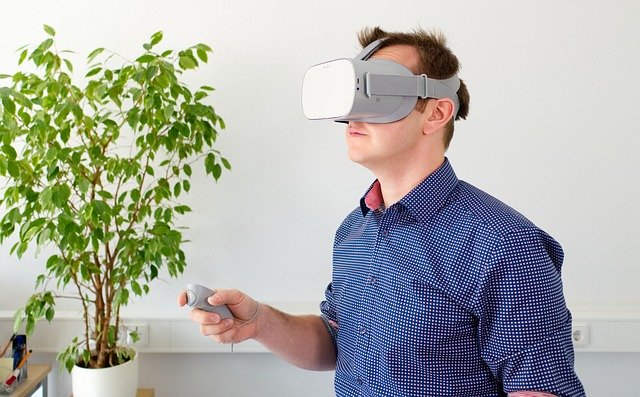Ideas for Using AR and VR Technology in Sales
For many people, the concept of using augmented reality or virtual reality technology still seems very foreign. However, the truth is that AR and VR tools are no longer just a topic for a science fiction movie. Soon, these tools will become a part of regular daily life.
Are you using AR and VR at work? If not, you could be missing out on major opportunities to connect with your customers and streamline your sales process. How can you use AR and VR in sales? In this article, we’ll share some practical use cases, so you can start experimenting with the technology as soon as possible – before your competitors get to it.
What is the difference between AR and VR?
What are AR and VR? AR stands for “augmented reality,” which means using glasses, lenses, or a screen to overlay digital elements on top of the real world.
A basic example of this would be Microsoft’s HoloLens, Snapchat filters, or Pokemon Go.
By contrast, virtual reality is exactly as you’ve seen it in movies (well, maybe not exactly). You strap on a helmet or visor that blocks out your vision and replaces it with a digital landscape. Sometimes, you wear gloves to manipulate onscreen actions, or you simply hold a pair of controllers, similar to a video game.
While both AR and VR are frequently (and most famously) used for entertainment purposes, there are a ton of ways a creative business can leverage this new technology, from marketing all the way through to sales.
Let customers test your products in AR and VR
Would you like to give your customers the opportunity to try your products before they actually buy them?
You can use AR technology to create a virtual space where they can preview and test a product that sparks their interest. For example, some cosmetics companies today are enabling their customers to try make-up on a virtual face.
The online eyeglass retailer Warby Parker uses an iPhone app to let users virtually try on a pair of frames. This is a perfect example of AR done right. It engages the buyer, answers their questions, and shows them how their life can be improved by the product (without having to set foot outside).
In an era of social distancing and increased online shopping in all industries, AR and VR can bring your showroom to the buyer.
Even if you don’t make and sell consumer goods, you can still get creative with your try-before-you-buy offerings. Restaurants or bars can record a 3D VR walk-through, especially for spots with incredible ambiance or gorgeous views. You’re only limited by your imagination when it comes to using this new form of media.
Immersive sales presentations
Have you been using the same sales presentation for months or even years? Over time, you may feel bored by it, or you may wish that you could better immerse your customers in the presentation, so they can truly experience your product or service.
Instead of a boring PowerPoint deck, you can break out a VR headset (many of which can be powered by a normal smartphone), and show your buyer a unique experience. With AR and VR, you can incorporate additional multimedia elements, like music, and create an entire world for them to see and feel. Why show them a picture of what the new apartment building they’re investing in would look like when you can walk them through the lobby?
Customers who have trouble imagining an end result will feel more confident investing in what you have to offer.
You might end up with two or three people in a meeting fighting over the chance to check out your VR presentation, never a bad thing.
Gamification is perfect for early sales engagement
In sales, gamification refers to applying the typical elements of game-playing to the sales process.
These elements can include point scoring and competition. Buyers can download an app and get points for taking pictures of your product in the wild, or you can create a scavenger hunt where users have to track a graphic or animation as it moves along the street in front of your store.
From there, you can continue to market to them until they become your loyal customers.
Did you know that you can use AR technology to create a game that will generate sales for your company? For example, you can create a virtual world, like on an app, where your prospective customers can play a game and be engaged.
Why wait to be groundbreaking?
Are you still convinced that you have many years ahead of you before you need to start thinking about AR and VR technologies? With this mentality, you may be getting left in the dust, way behind your competitors.
Instead, start brainstorming ideas for incorporating these technologies into your current sales strategy with the goal of “wowing” your prospects. They’ll be impressed with your commitment to creativity and innovation.
Latest posts by FollowUp (see all)
- CRM Integrations: Sometimes Less Is More - March 18, 2021
- Becoming an Account Executive in 5 Totally-Doable Steps - January 29, 2021
- 3 Bad Sales Techniques You Should Give Up Right Now - December 28, 2020






